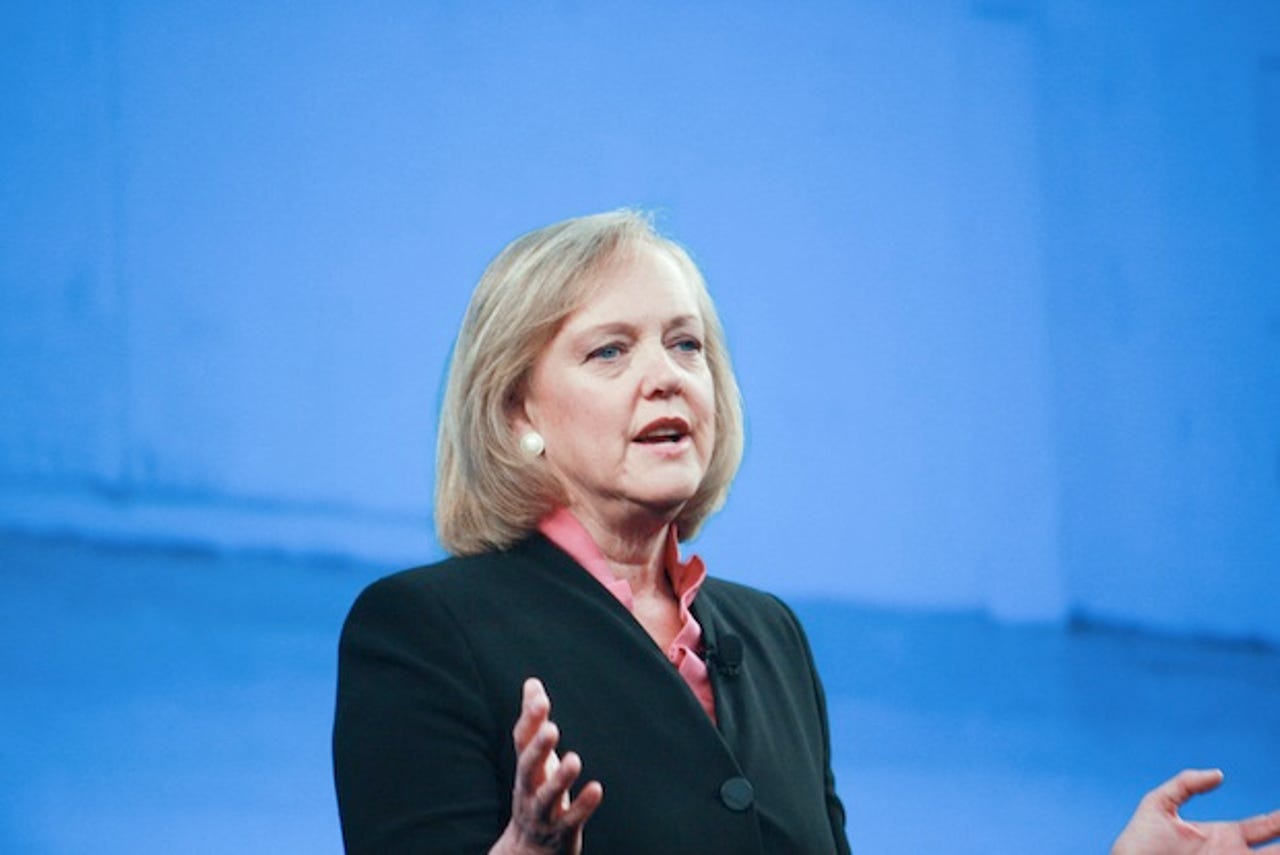Meg Whitman on what it took to split HP into two companies


In the run up to separating Hewlett Packard into the PC and printer-focused HP Inc and business-oriented Hewlett Packard Enterprise, the company built 4,000 servers, generated 400,000 email boxes and managed 500 projects in flight across 170 countries.
"Through this complex process of separating Hewlett Packard we got really good at this kind of work, at a scale that most companies would never even attempt," Whitman told the HPE Discover conference in London.
"Success in the world favours companies that can invent and reinvent at warp speed," and given HPE's experience of splitting from HP, she said it is "one of the few companies that can help enterprises navigate to what I call 'The new style of business'".
"We can help you take your IT environments and make them more efficient, productive and secure as we bridge the traditional to the new."
In an attempt to drive this rapid IT transformation and to catch-up with the automated approach taken by hyperscale datacenter operators such as Amazon, Google and Microsoft, HP has announced its HPE Synergy platform, which will be available in the second half of 2016.
The HPE Synergy platform will provide a "unified" API for programmatically setting up the automatic deployment and monitoring of the software-defined infrastructure - the servers, storage and switches - that sit underneath many applications.
By hooking into a various third-party management layers, HPE Synergy will be able to intelligently deploy and monitor virtual machines, software containers and bare metal systems in a datacenter and in doing so, try to make spinning up infrastructure for new applications as easy as it is on cloud platforms like AWS EC2, while squeezing more work out of physical hardware.
Rather than reinventing the tools already available for managing these different types of infrastructure, HPE is instead providing a single platform that plugs into existing tools. HPE says that, among others, it is working with Chef, Ansible on bare metal, Docker for containers, VMware on ESXi/vSphere, Microsoft and Nvidia.
Ric Lewis, general manager of converged datacenter infrastructure business for HPE, said the Synergy platform is designed to bring the "speed and agility" of cloud platforms to on-premise.
However, HP has competition on the on-premise, software-defined infrastructure front, from Cisco and the work it's doing on composable infrastructure with its UCS M series machines. There is also Mesosphere with its platform that pools resources across a datacenter as if it were a single machine.
Challenging times
HPE and HP Inc face a variety of challenges to HP's traditional business. In the most recent earnings for HPE and HP Inc, five out of six of HP's original core groups (Personal Systems/PCs, Printers, Software, Enterprise Services and Financial Services) all saw revenue slump. Only the Enterprise Group, which includes servers and networking, saw a slight uptick of two percent higher revenue on an annual basis.
For its part, HPE has inherited an enterprise services business that, despite still generating billions of dollars, saw operating earnings fall nearly 60 percent in the five years to Q2 2015.
In the face of tumbling figures in key areas, HP and its successor organisations have slimmed down considerably in recent years, with HP planning to have reduced its workforce by 58,000 by November this year and HPE looking to achieve $2.7bn in annual cost savings.
On a more positive note, HPE is counting on boosting the growth in its cloud-related revenue, projecting that it would reach $3bn in 2015, with annual growth of 20 percent.
"Traditional IT environments are here to stay and will continue to be very important. But workloads are migrating and the vast majority of them are going to move to the cloud," said Antonio Neri, general manager of the enterprise group at HPE.
To help support hybrid cloud platforms, HPE has teamed up with Microsoft to allow businesses to build private clouds using software that underpins Redmond's Azure cloud platform.
Also revealed at Discover were HPE plans to bolster its cloud management offerings, with the announcement of HPE Helion Managed Cloud Broker. The managed service will allow businesses to provision, access, consolidate and securely control services across multiple cloud providers.